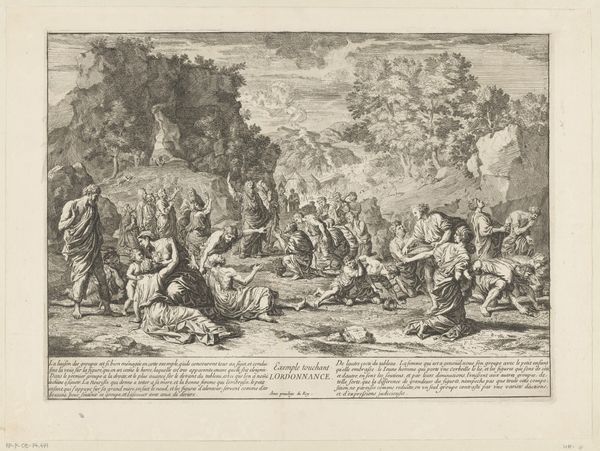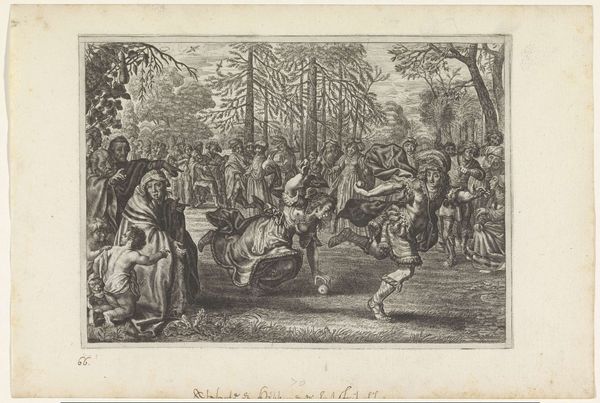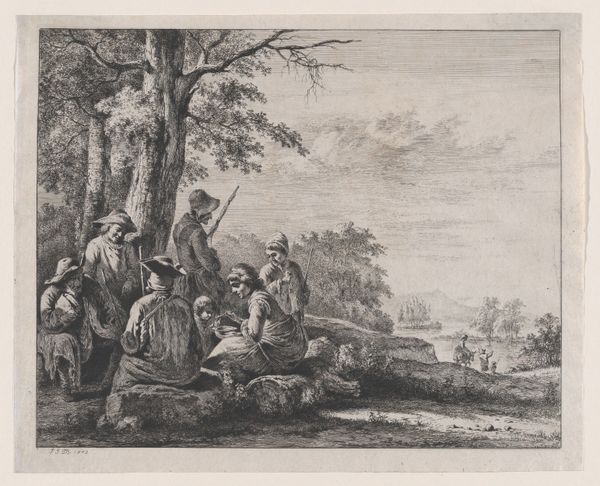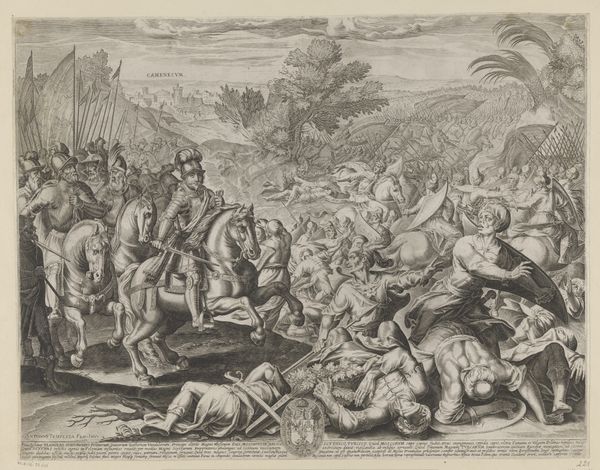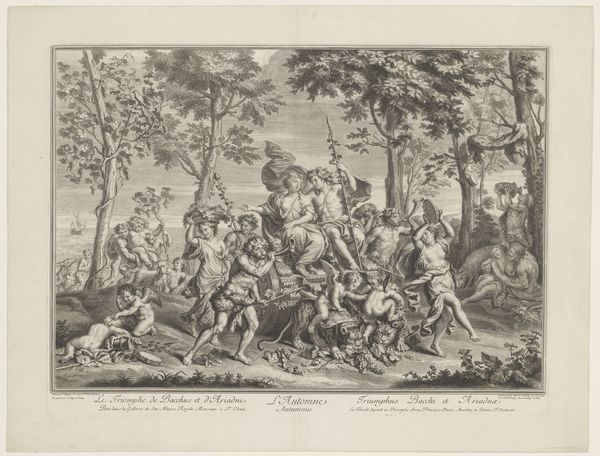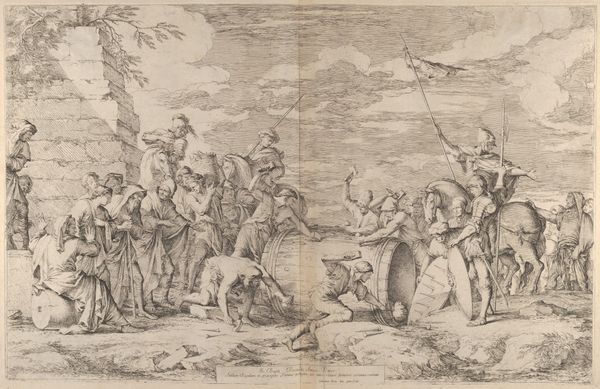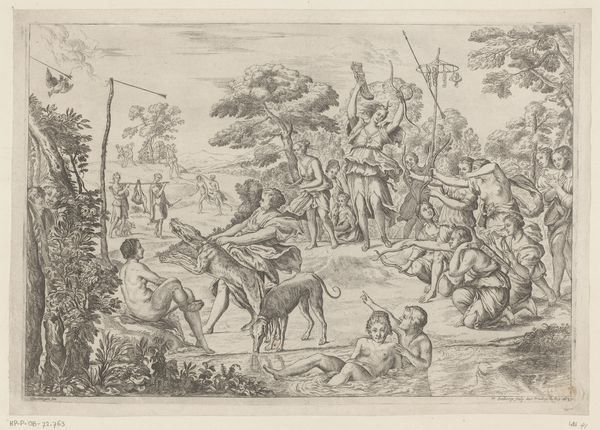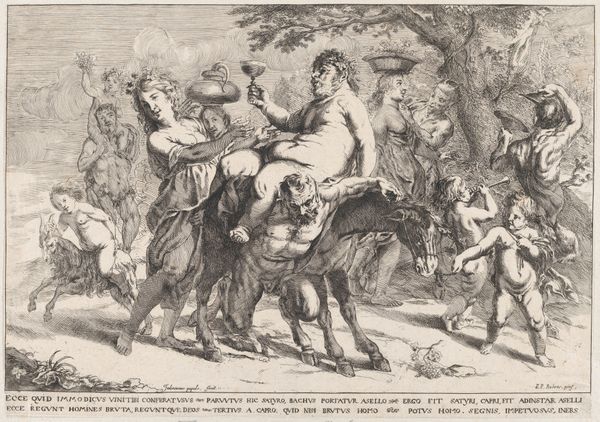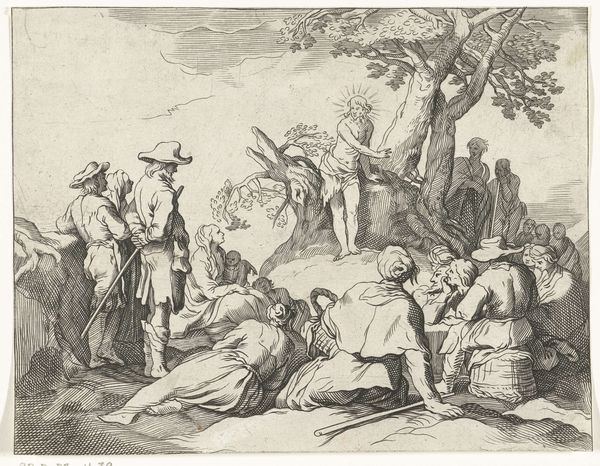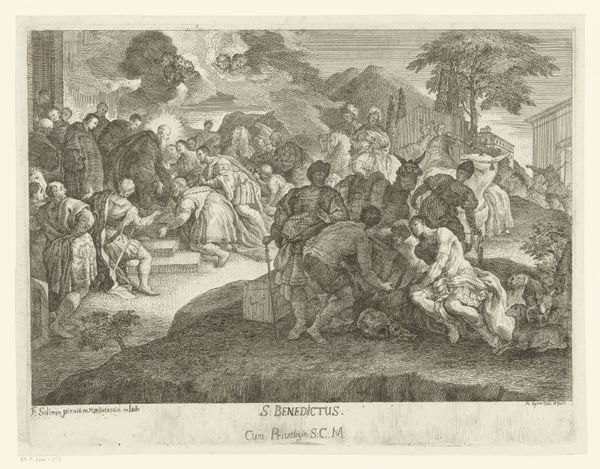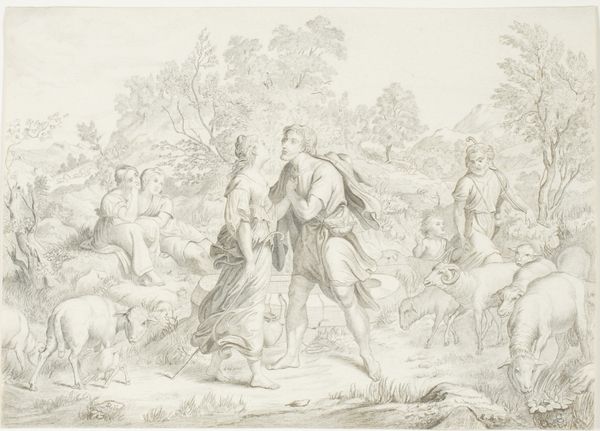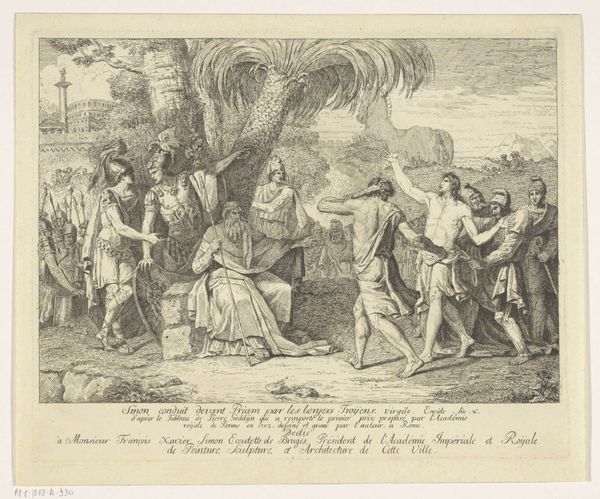
Mozes en de Israëlieten bouwen een onderkomen voor de tafelen der wet 1755
0:00
0:00
drawing, print, etching, paper, ink, engraving
#
drawing
#
narrative-art
#
baroque
# print
#
etching
#
pencil sketch
#
classical-realism
#
paper
#
ink
#
history-painting
#
academic-art
#
engraving
Dimensions: height 345 mm, width 471 mm
Copyright: Rijks Museum: Open Domain
Editor: Here we have "Moses and the Israelites Building a Shelter for the Tablets of the Law" by Jean Denis Lempereur, from 1755. It’s an etching, quite detailed despite the delicate lines. It depicts a whole community actively building something… It feels very… communal. What stands out to you about this piece? Curator: Immediately, the layered symbolism catches my eye. Notice how the building of the shelter isn’t just construction; it's an act of cultural formation, of creating a sacred space. Consider what it means to physically build a container for the law – the law is not abstract, but housed, protected. What values might this act visually convey? Editor: Well, the activity shows a commitment to their beliefs and… almost an effort to make the abstract law tangible. Curator: Exactly. The shelter, the ark, is a tangible representation of the covenant. Lempereur highlights the active participation of the Israelites. How does this contrast with other depictions of Moses receiving the tablets, which usually focus on him alone? Editor: It’s less about the individual and more about the entire community’s responsibility, a shared undertaking. Is that a reflection of societal values at the time Lempereur created this work? Curator: Precisely. Consider how the Enlightenment valued communal effort and rational thought. The image reframes the divine law within a context of human action and societal construction, almost secularizing a sacred narrative. The bodies are neoclassical, almost staged, which emphasizes that Lempereur’s artistic and cultural memory is that of idealized antiquity, a world that society strived to embody. Editor: So, the piece isn't just about a biblical story, but about societal values reflected through the lens of art history and symbolism. I hadn’t considered that layering. Curator: Indeed. It prompts us to consider how visual imagery helps shape and reinforce communal identities, linking present and past through carefully chosen symbols.
Comments
No comments
Be the first to comment and join the conversation on the ultimate creative platform.
